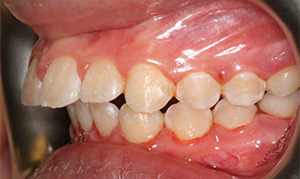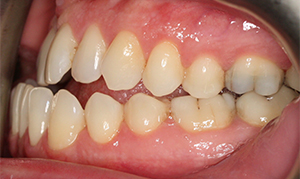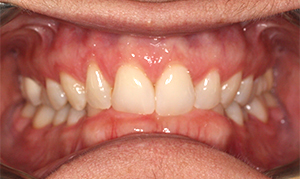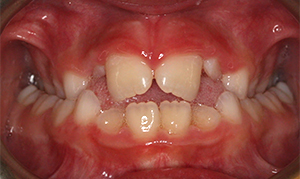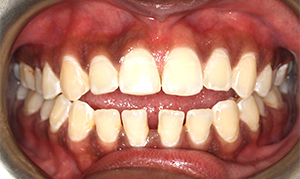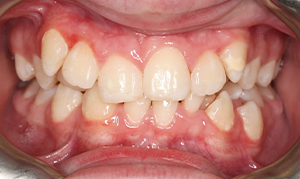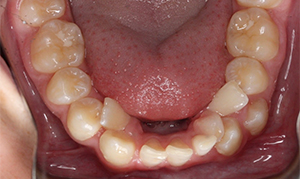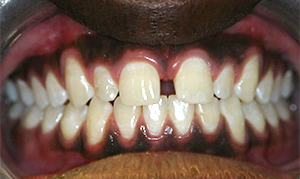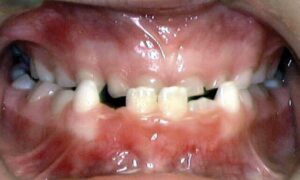Orthodontic problems can affect anyone – in fact, our teeth are almost never naturally perfect. Malocclusion, or a “bad bite,” can cause problems with chewing, oral hygiene, speaking, and esthetics. A bad bite can be genetic, or it can be caused by thumb sucking, dental disease, poor dental hygiene, accidents, birth defects, or other medical conditions.
Being educated about the orthodontic problem you or your child may have is the first step to correcting it. Orthodontic treatment performed by Dr. Cheryl L. Held can improve both the functionality of your bite and the appearance of your smile.
Below are some examples of the most common orthodontic problems.
Upper Front Teeth Protrusion
The appearance and function of your teeth are impacted by this type of bite. It is characterized by the upper teeth extending too far forward or the lower teeth not extending far enough forward.
Lower Front Teeth Protrusion
The appearance and function of your teeth are impacted by this type of bite. It is characterized by the lower teeth extending too far forward or the upper teeth not extending far enough forward.
Deep Bite
The upper front teeth extend down over the lower front teeth, sometimes causing the lower front teeth to bite into the roof of the mouth.
Crossbite
The upper teeth sit inside the lower teeth, which may cause tooth stratification and misaligned jaw growth. A crossbite can occur in the front or back of the mouth.
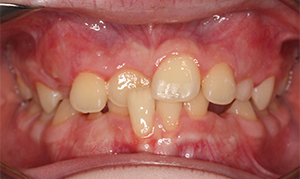
Open Bite
Proper chewing is impacted by this type of bite, in which the upper and lower front teeth do not all come together and overlap properly. An open bite may cause a number of unwanted habits, such as tongue thrusting. Likewise, tongue thrusting can cause an open bite. Thumbsucking often leads to having an open bite.
Crowding
Crowding occurs when teeth have insufficient room to come into the mouth up from the gum. Crowding can often be corrected by expansion (with expanders, braces, or both), and many times, tooth removal can be avoided.
Spacing
Spacing problems may be caused by missing teeth, tooth size discrepancies (such as smaller teeth or abnormally shaped teeth), tongue thrust habits, or a tooth-to-jaw size disharmony. Spacing may seem like just a cosmetic or esthetic issue, but there is always an underlying cause that is more complex.
Underbite
In an underbite, the lower jaw extends out, causing the lower front teeth to sit in the front of the upper front teeth.
